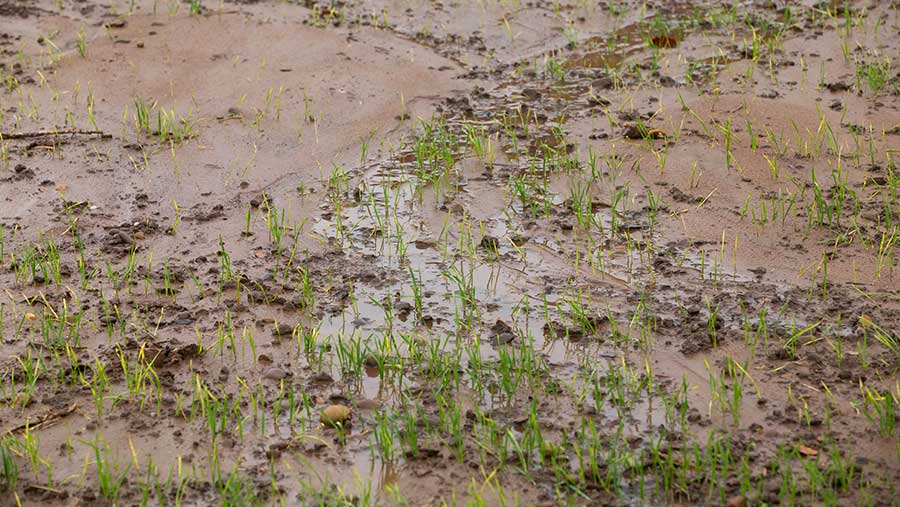Scientists uncover secret of blackgrass’s waterlogging tolerance
 © Tim Scrivener
© Tim Scrivener Blackgrass often thrives on heavy, waterlogged land, and new research has revealed how the problematic weed uses specific adaptations in root structure to flourish in saturated soils.
Scientists at Rothamsted Research discovered that waterlogged blackgrass plants grow bigger than their well-drained counterparts, while winter wheat growth under the same conditions is significantly reduced.
In fact, the grassweed continued to successfully grow for up to three weeks in fully-saturated soils, highlighting the importance of drainage in combatting the weed.
See also: Could compaction-busting crops become a reality?
Research also examined different populations of blackgrass and showed that the more herbicide-resistant the population was, the more waterlogging tolerant it was too.
The results also help to explain why blackgrass tends to form patches in areas of the field where soil is good at holding onto water.
This suggests fields infested with herbicide-resistant blackgrass are going to be badly affected by autumn waterlogging.
Rothamsted’s Dr Dana MacGregor, who led the research, said: “This is an important step forward in our understanding of what makes blackgrass so resilient.
“We are getting closer to pinpointing the physical and genetic mechanisms that make blackgrass such a formidable foe for cereal farmers.”
Root structure adaptations
Seedlings of wheat and blackgrass were flooded for up to 21 days in pots in the greenhouse, where plant size and tissue samples were measured.
Plant roots were carefully examined under the microscope to see if structural changes could be identified. Changes in gene expression and metabolism were also measured.
Dana says: “We knew that wheat plants alter their root structure in response to waterlogging, developing drinking straw-like structures called aerenchyma that increase gas exchange from the unflooded tissues down into the flooded roots.
“What we were surprised to see is that blackgrass always had these structures, even in the well-drained conditions.”
In other words, blackgrass is “ready to go” when fields are flooded, while wheat and other crops must remake their roots to survive, which takes time and energy.
Molecular analysis
When waterlogged, wheat changes gene expression and metabolite concentrations, turning on pathways that will help it to survive.
Blackgrass showed minimal responses, behaving almost as if it was oblivious to the waterlogging.
These differences could not only help shape potential control strategies for this pernicious weed, but may also identify new physical, genetic or metabolic traits that may be helpful in future-proofing climate-stressed crops.
“If we want to future-proof our crops, studying how this weed survives today’s challenges could help us to identify new or useful traits that could be used in tomorrow’s crops,” Dana says.
The research was primarily funded under a Science Initiative Catalyst Award supported by the Biotechnology and Biological Sciences Research Council as part of the Growing Health Strategic Research Programme.
The cost of blackgrass
Blackgrass is one of the most problematic and damaging agricultural weeds for winter wheat in western Europe.
It costs UK farmers about £400m a year, and as few as 12 plants/sq m could reduce crop yield by 5%. Severe infestations can result in yield loses of up to 70%, squeezing farm productivity.
